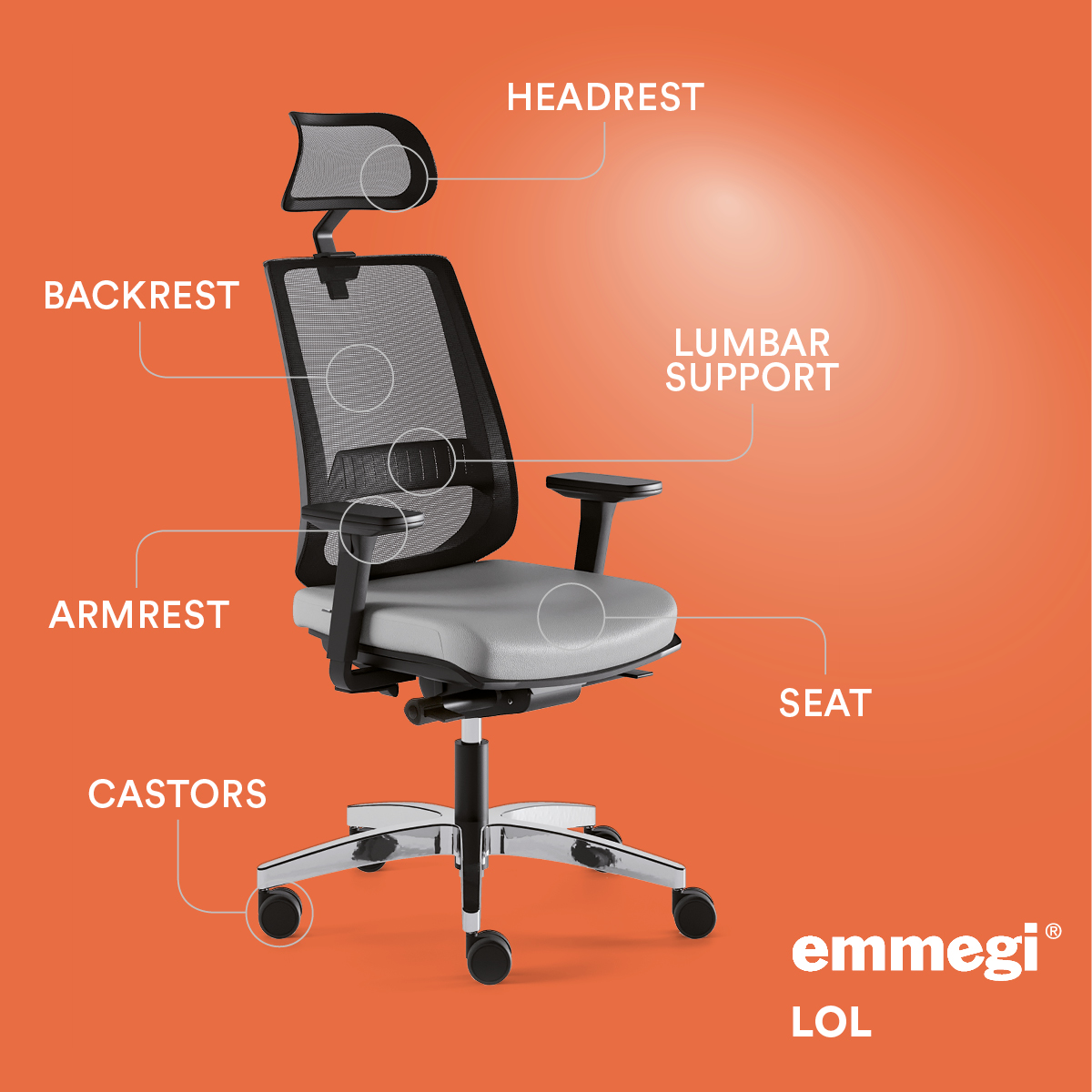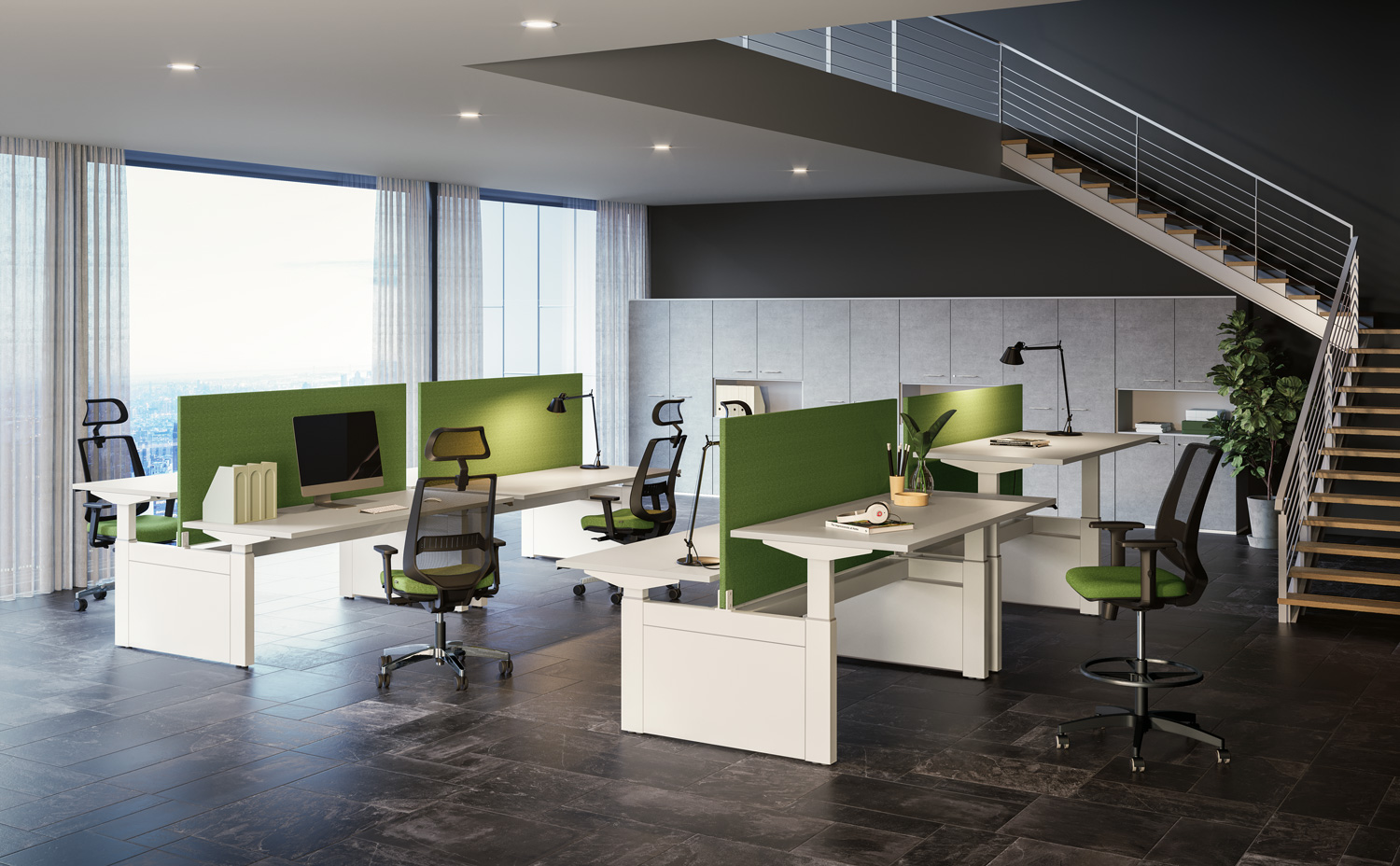A clear mission, well-defined relationships and a physical environment that echoes all the above. There’s no better way to engender a positive climate of collaboration between a company’s management and its human capital.
All this is far from useless sophistry, as revealed by a famous study conducted all the way back in 1974 by James, L. R. and Jones, A. P., entitled Organizational Climate: A Review Of Theory and Research. The case studies analysed show that environments, by their very definition, are directly jointly responsible for the way activities are conducted therein. They influence and shape behaviour patterns that cause people to interface with each other, as well as the level of proactivity of individuals in a group setting.
It’s easy, then, to conclude that the greater the level of comfort that a worker enjoys, regardless of their position, the harder they are likely to work.
Working in comfort means working better
In this sense, one of the central issues for anyone in a desk job, especially in recent years, is workstation comfort, by which we mean both the physical workplace – which has to be as comfortable as possible – and the environment in terms of health.
Spending hours on end in one position inevitably has implications linked to the proper handling of fatigue, especially when it comes to dealing with stress on the spine.
Preventing overloading or avoiding incorrect posture, therefore, should be an absolute priority to avoid injury.
Each to their own…chair!
So not all chairs are a perfect fit for everybody.
It’s also inevitable that, when choosing a chair for your workplace, your decision should essentially hinge on one central factor: based on the type of work you do, what are the basic requirements that the chair must meet?
There are jobs that mainly involve working at a computer. While there are other desk-bound jobs that also involve a lot more moving around (take, for example, someone working on the Stock Exchange, in a state of perpetual motion).
It’s clear, then, that the needs of the individual go hand in hand with the level of interaction they have with their surroundings.
The components of an operator chair
When furnishing and defining spaces in an open-plan office or your own personal environment as a freelancer, in line with the above considerations, what chair you choose to use undeniably plays a central role.
In this sense, the rules of ergonomics are the kingpin around which your decision should revolve.
But what are the elements that come together to define the structure of a chair? Knowing what they are is important in determining what setup best caters to your individual requirements.

Backrest, seat, headrest, castors… All these elements – each chosen with the features that suit your individual requirements – when put together in the best possible way, help build your ultimate dream chair.
If you’re looking for a high level of mobility, you’ll probably want to choose a frame on castors (rubber or plastic, depending on the floor); or you may prefer a stationary frame that stands directly on the floor.
If you’re pretty much sedentary the whole time or for lengthy periods, you should look carefully at the padding used and the type of lumbar support, along with backrest or headrest options that will help you maintain good posture.
If you only have quite a tight space to play with, you need to decide whether it’s a good idea to add armrests or do without.
If you’re doing a lot of moving about, it’s worth considering chairs that give you plenty of options, allowing you to adjust height for each new task.
As you can see, there are endless combinations and, consequently, only a thorough look at all the various dynamics that may come into play in the workplace can steer you towards the best possible choice.
Personalize for improved comfort
There’s an essential factor – as mentioned earlier – to consider in selecting the right chair: how much it allows you to tailor the chair to your needs. So, finding a structure that allows you to adjust the height of the seat and backrest, fine-tune the lumbar support or adjust seat depth is an essential, must-have requirement.
Conditions like a 90° angle between the torso and line of the thighs are a basic requirement for good posture. But there are various other details to be taken into consideration.
There are some additional factors that should inform your final selection: a backrest with adjustable tension is one of them, as is the tilting feature, which gives a wide range of motion. Another consideration is the armrests: having a wide range of adjustment (from height to rotation) is a real plus.
Having the option of an adjustable tilt angle – even if we choose just a 3° tilt – or deciding to slide the seat a few centimetres forwards: these are details that have a big impact on the comfort front (and consequently, as mentioned, on productivity, too).
The perfect chair? No, the best possible chair.
Essentially, then, there’s no such thing as the perfect chair. What there is, though, is the best chair for the needs of each individual, based on the type of job they’re tasked with. And let’s not forget, as we mentioned at the start, investment in an optimal workstation is, first and foremost, an investment in the job itself (and in how it is performed).
Comfort is an incentive to work better, even though we often overlook the fact. Now it’s up to you to choose!

